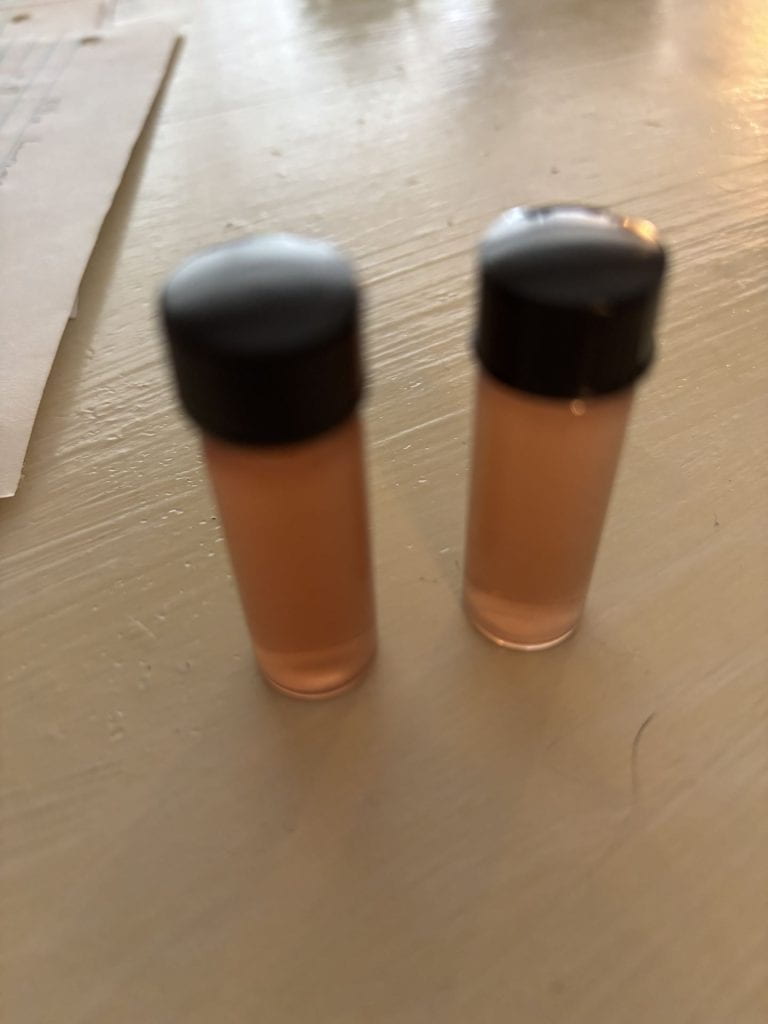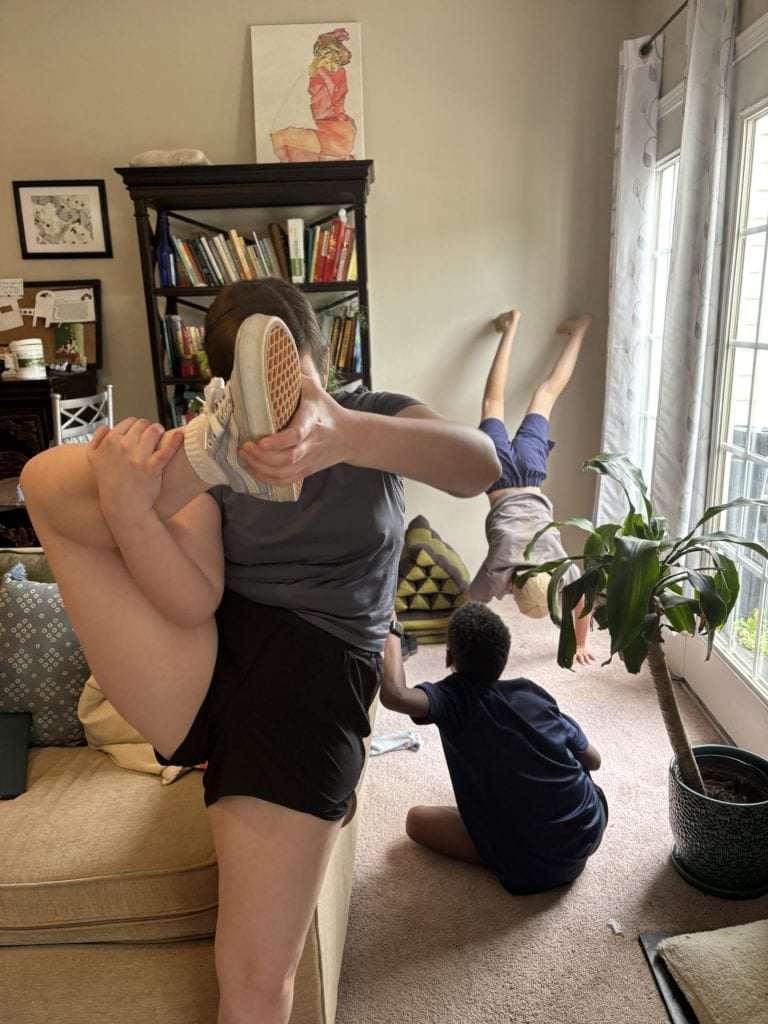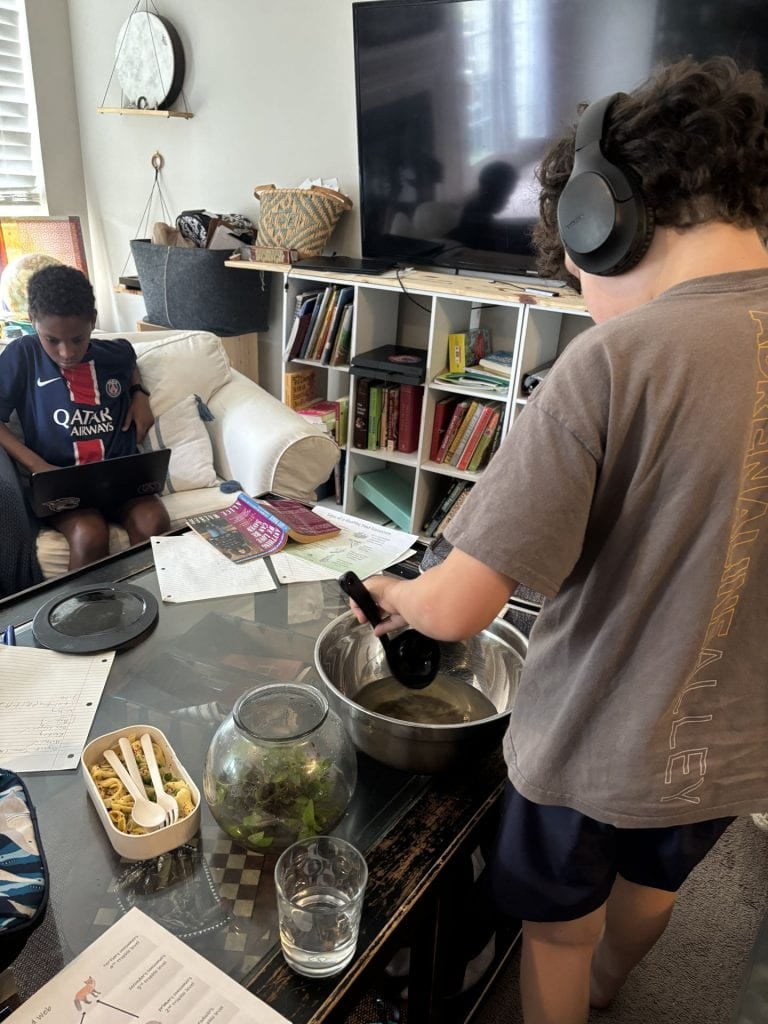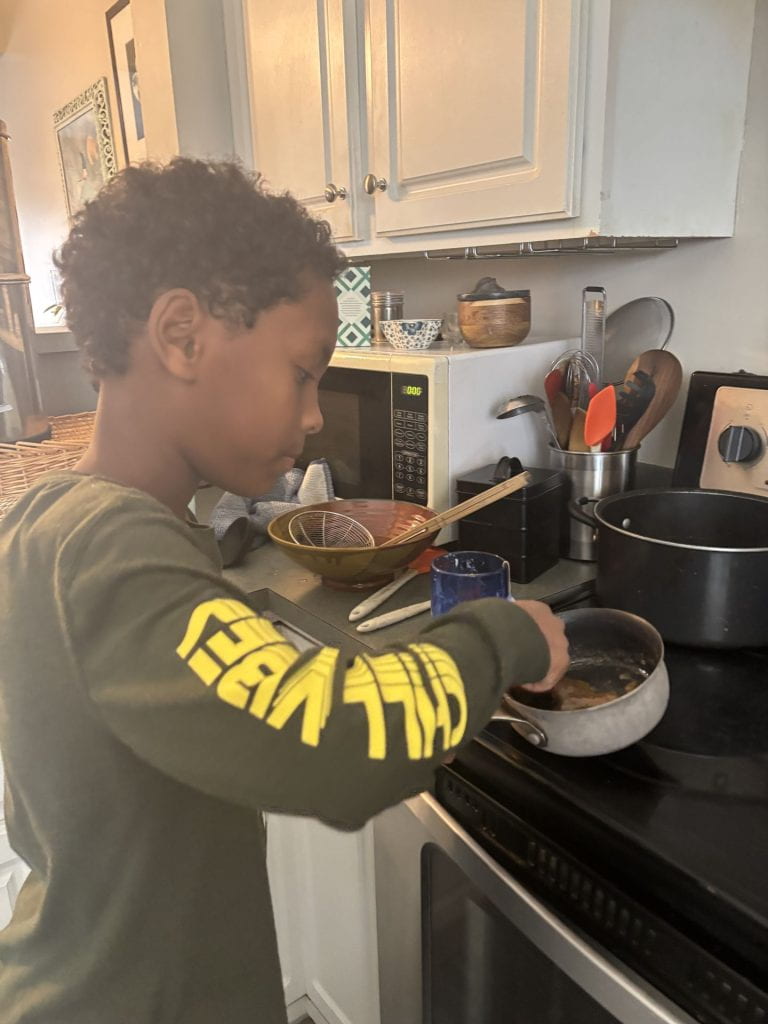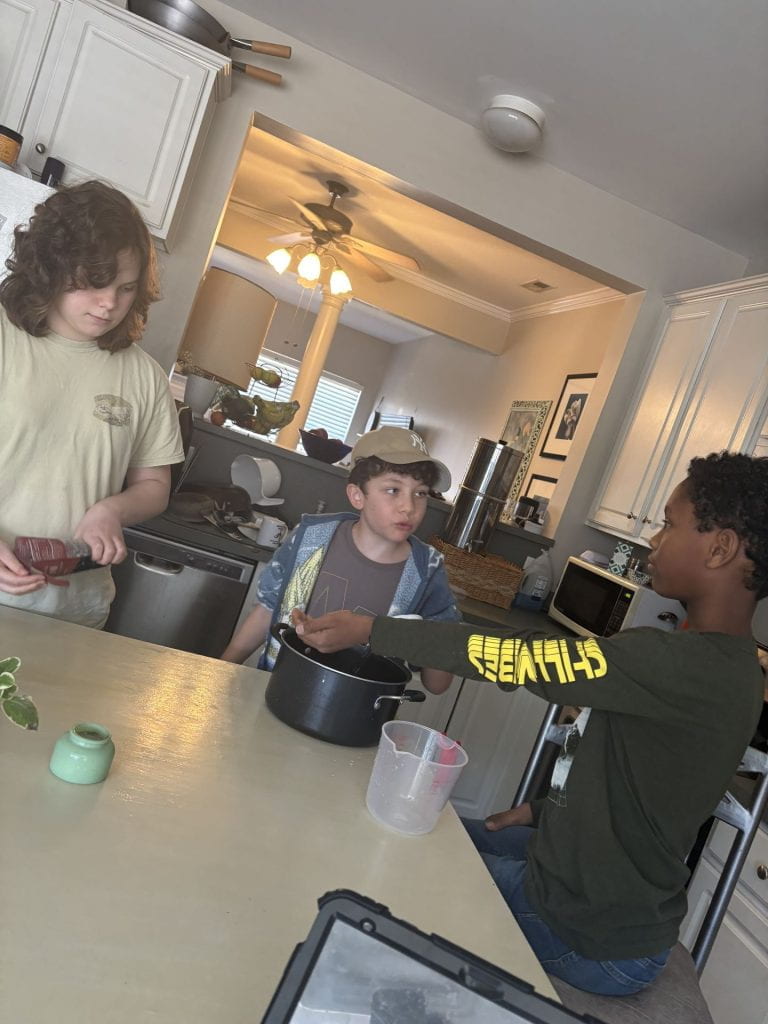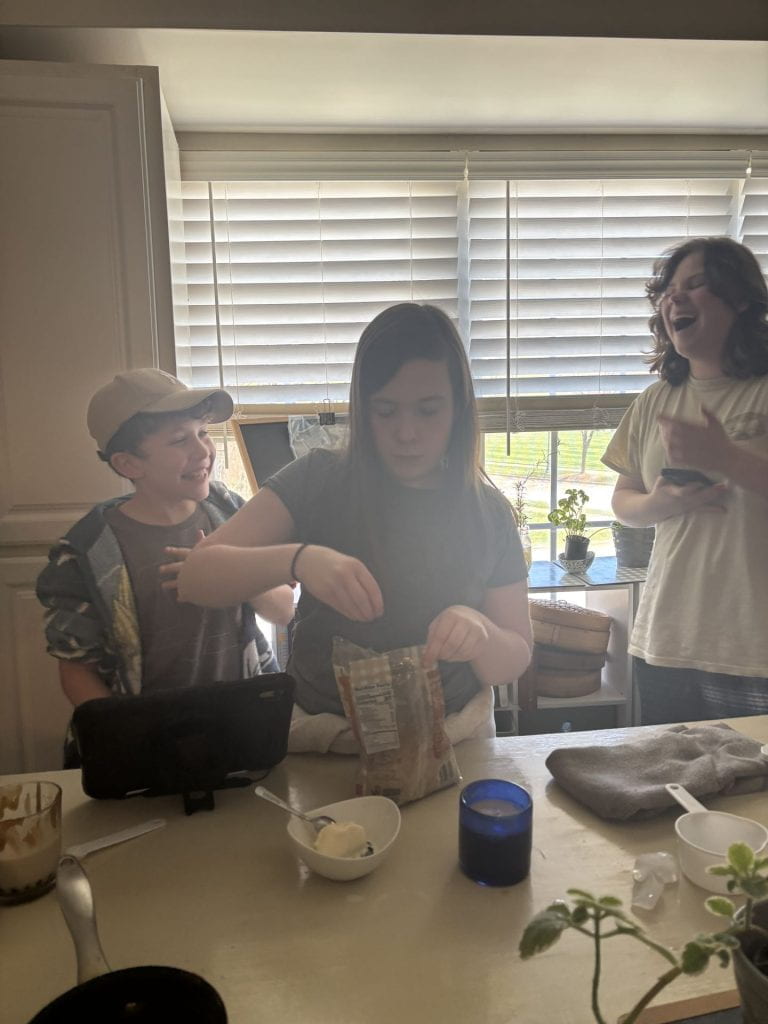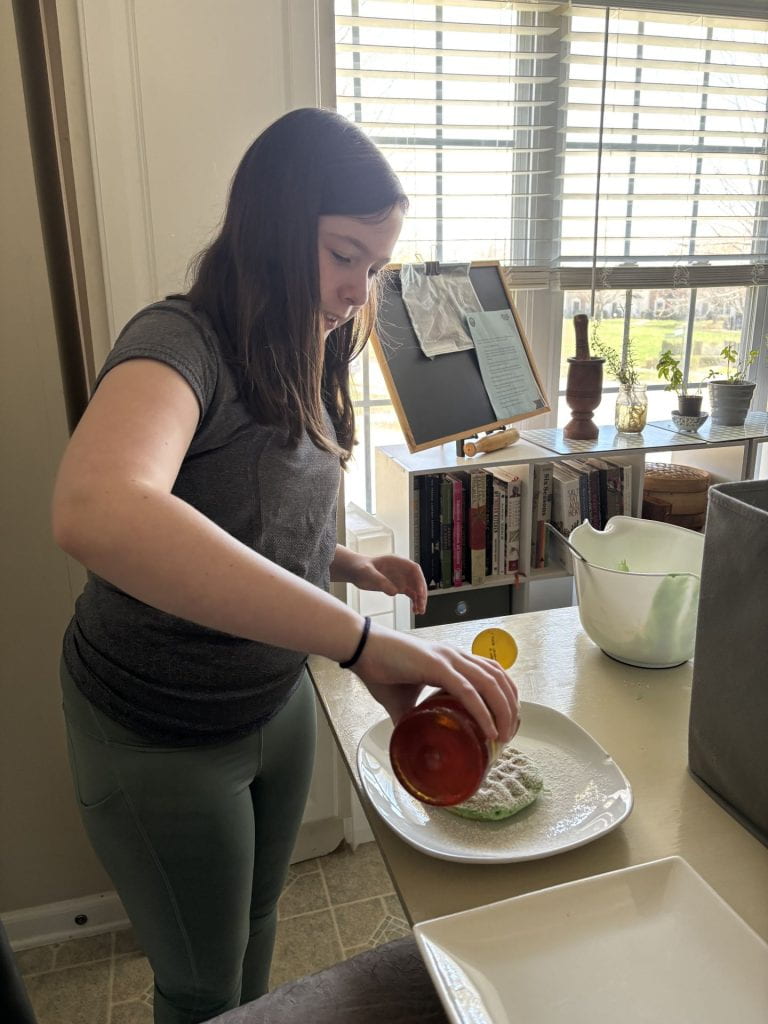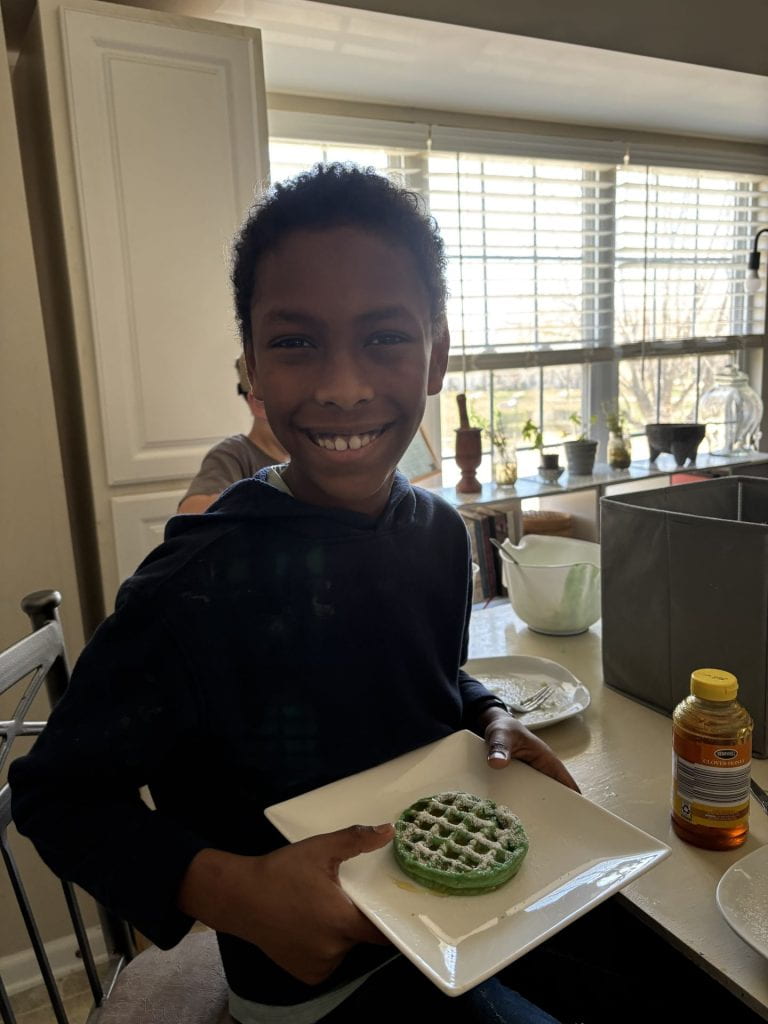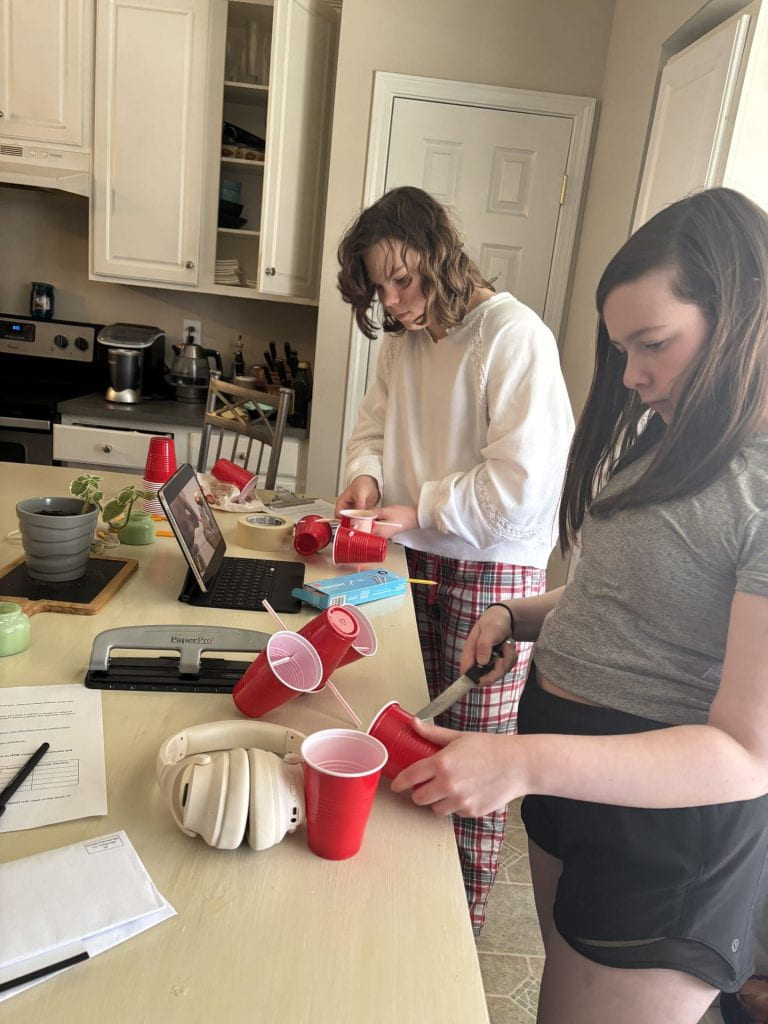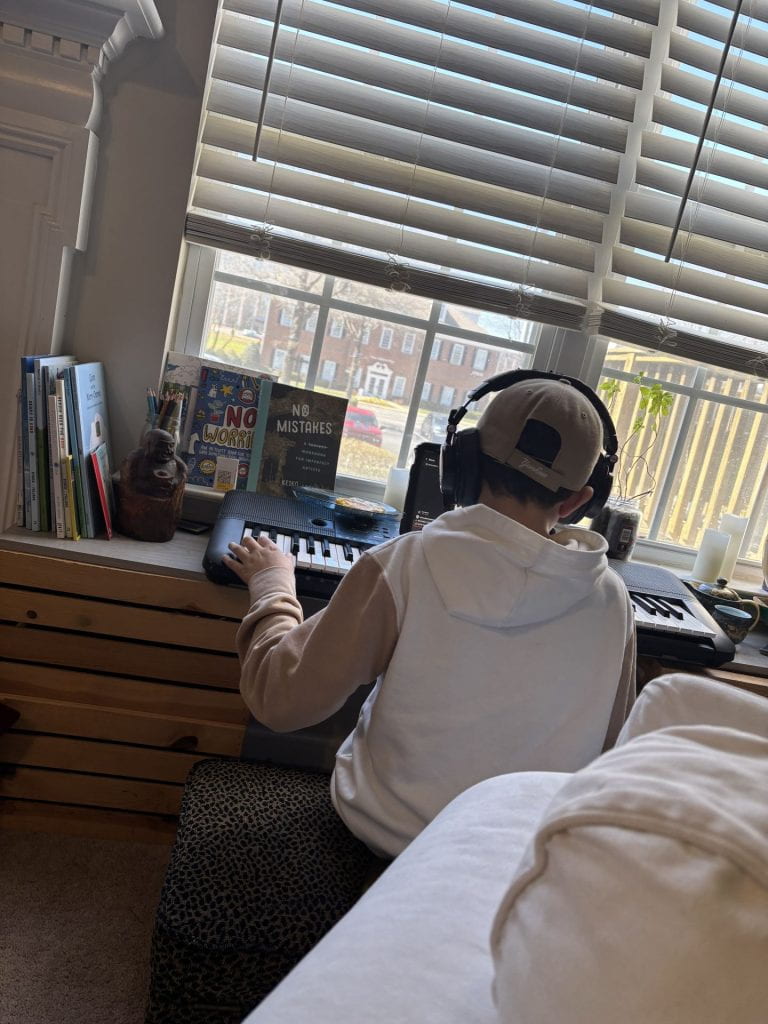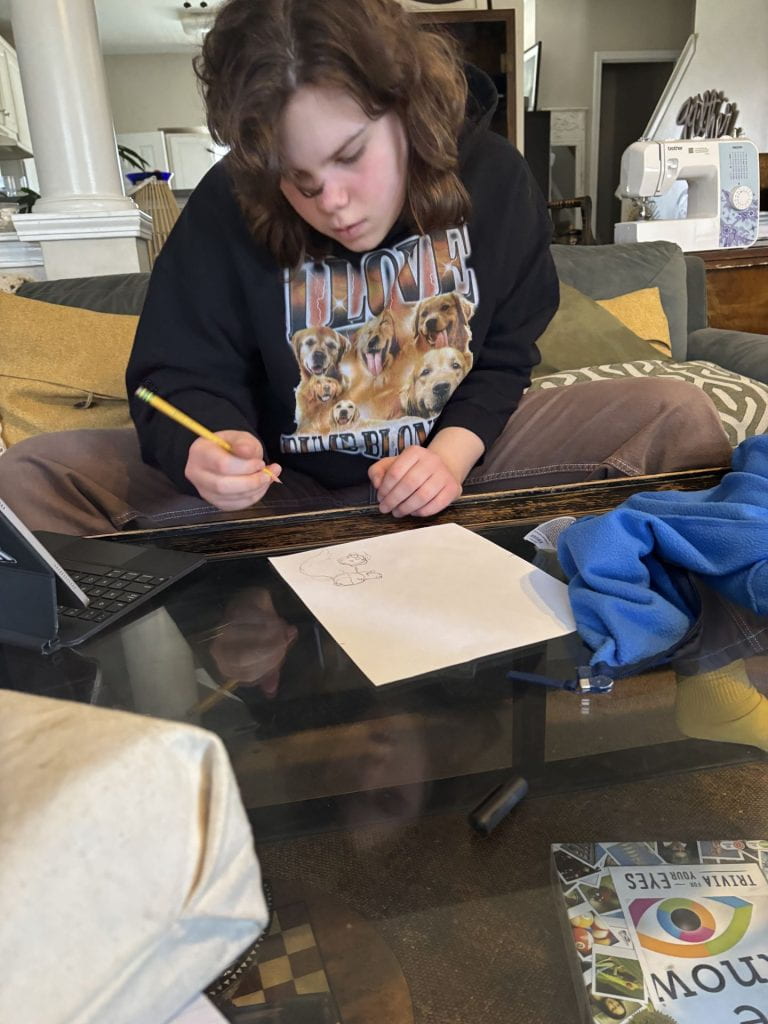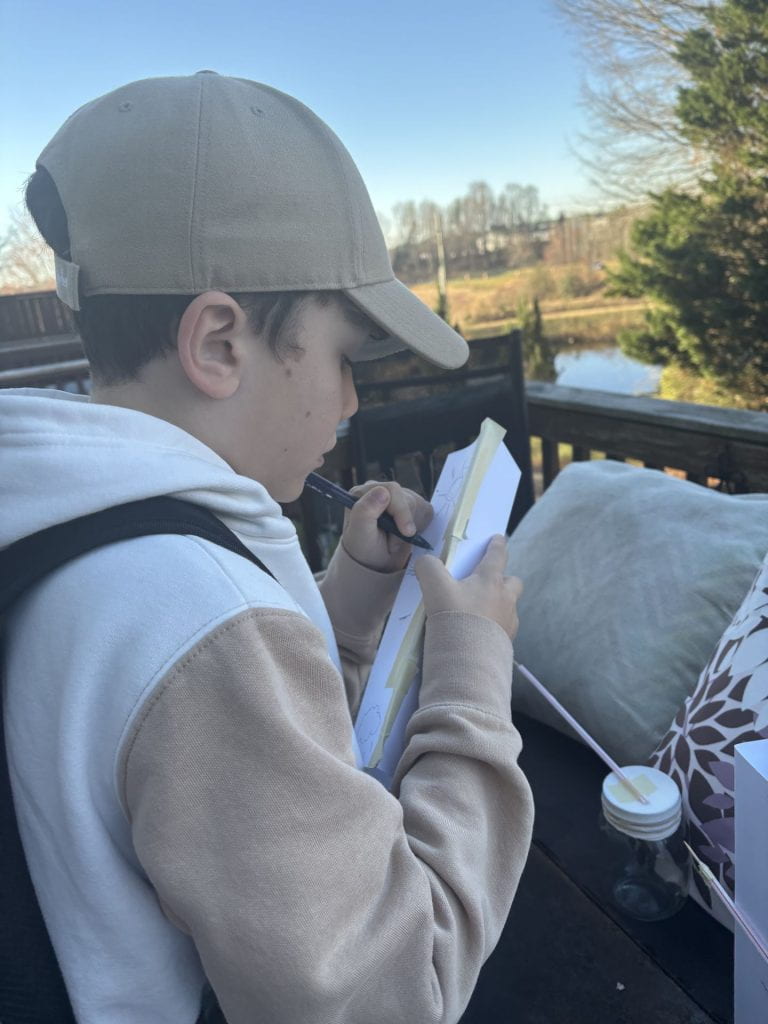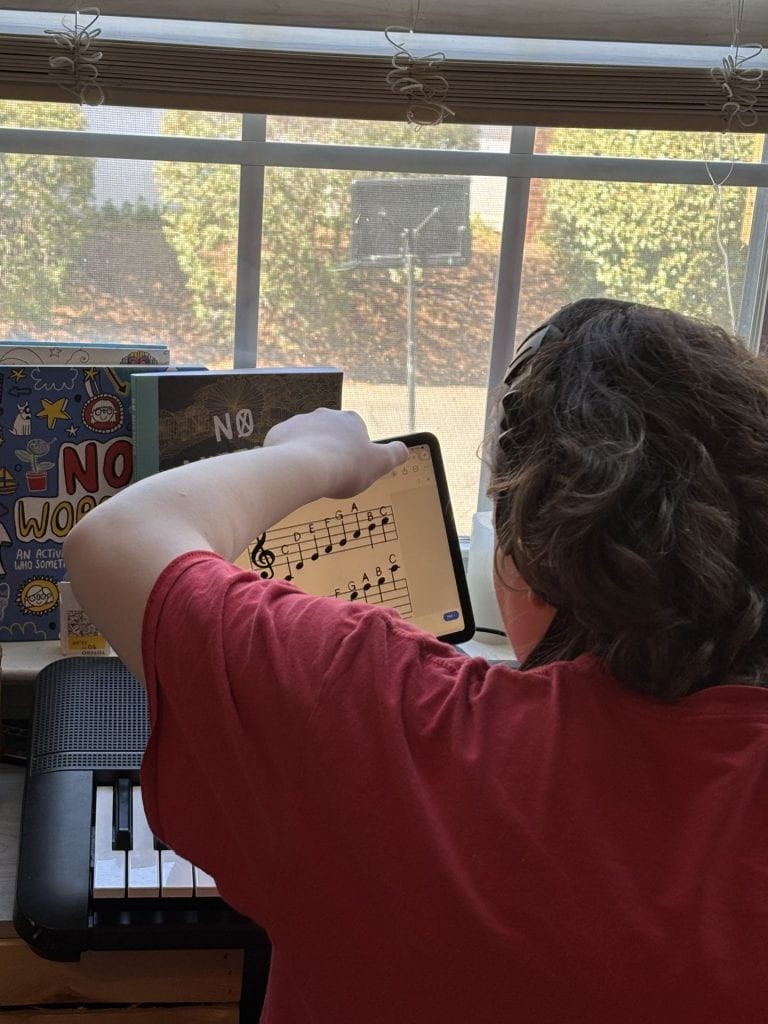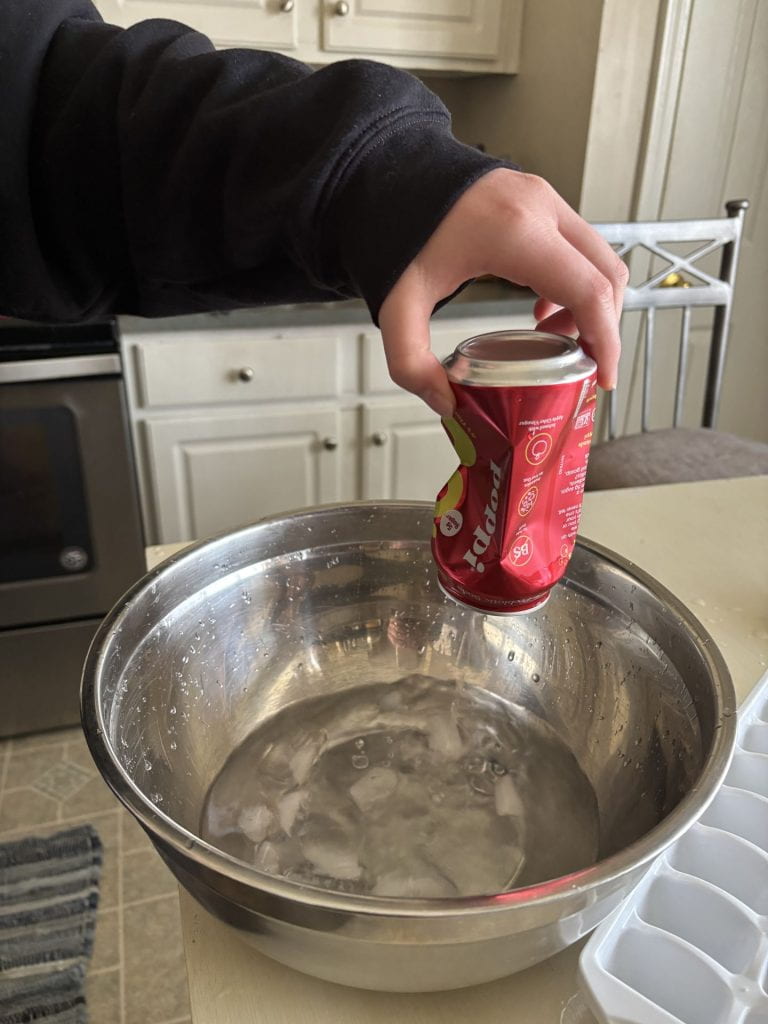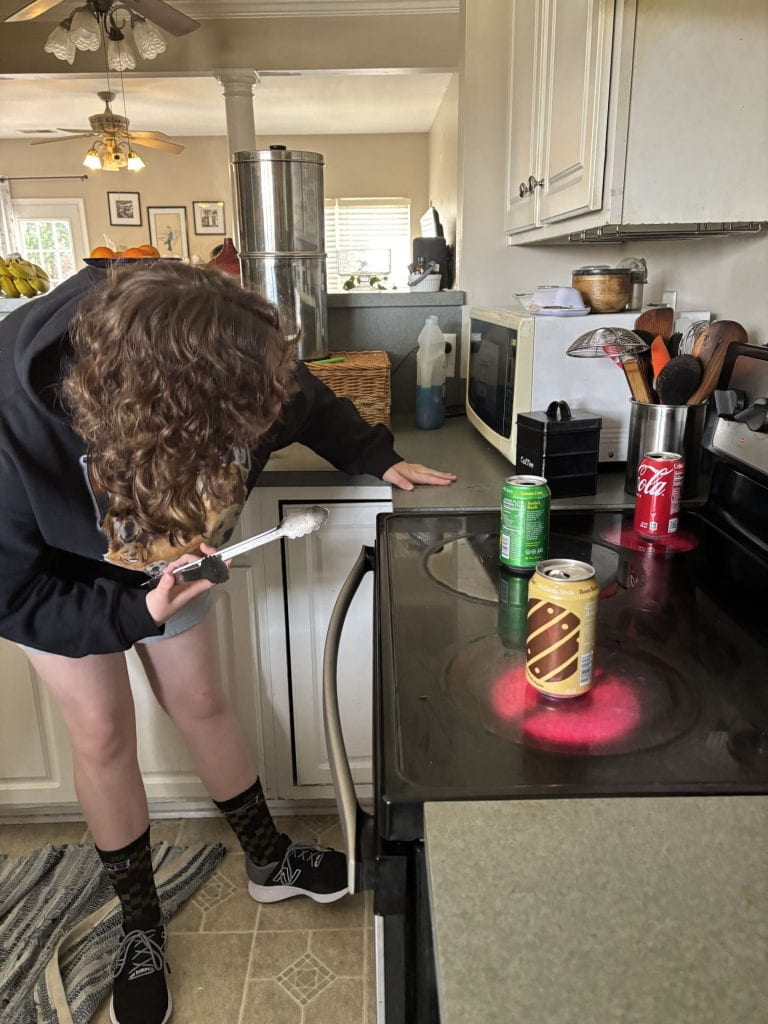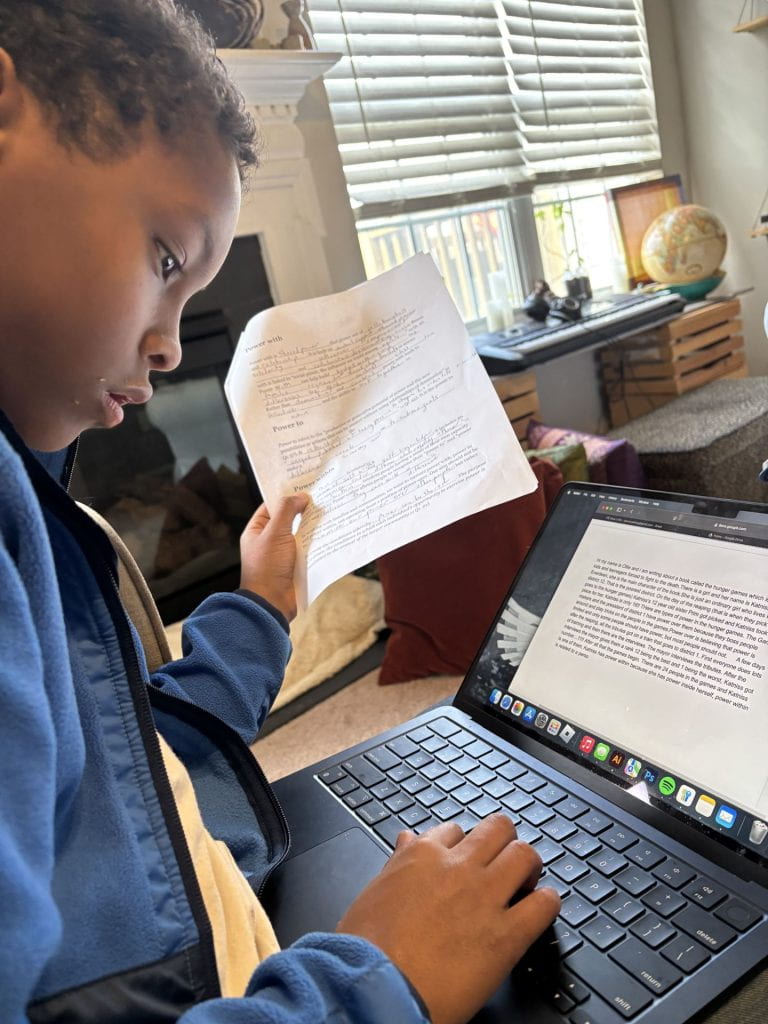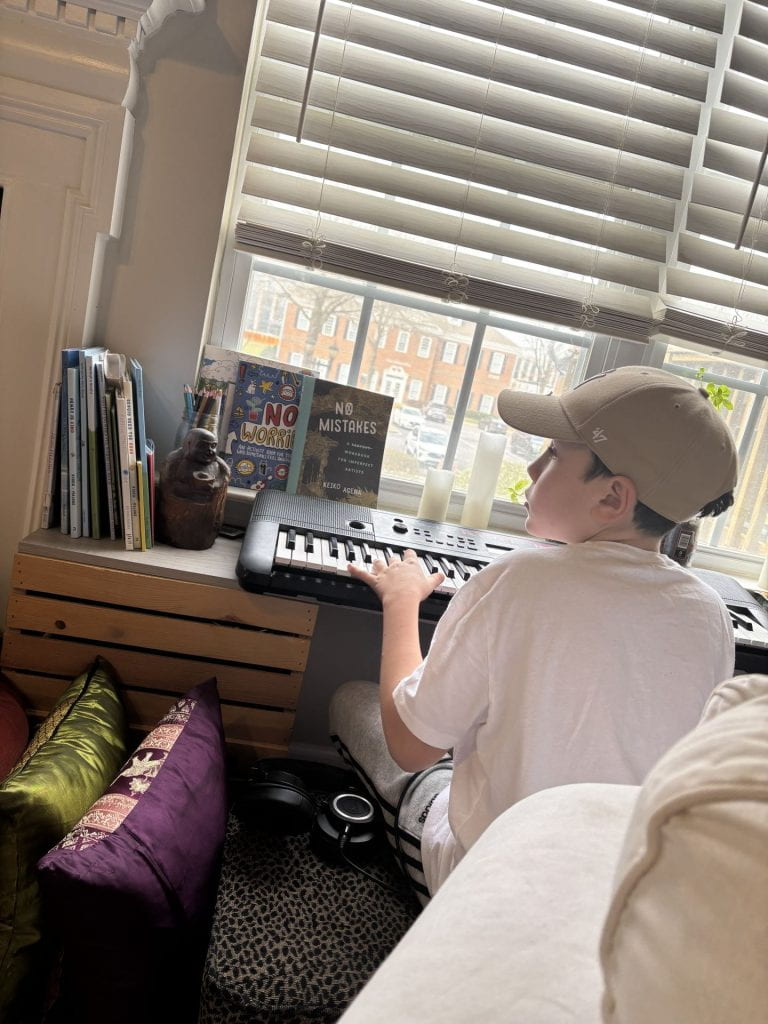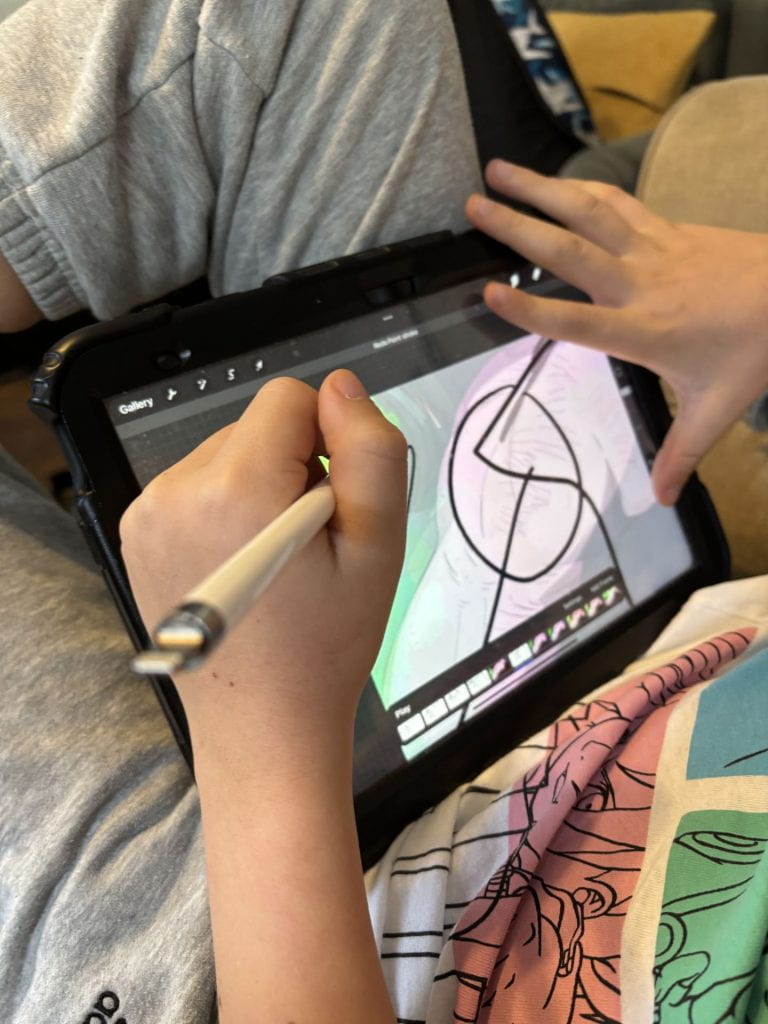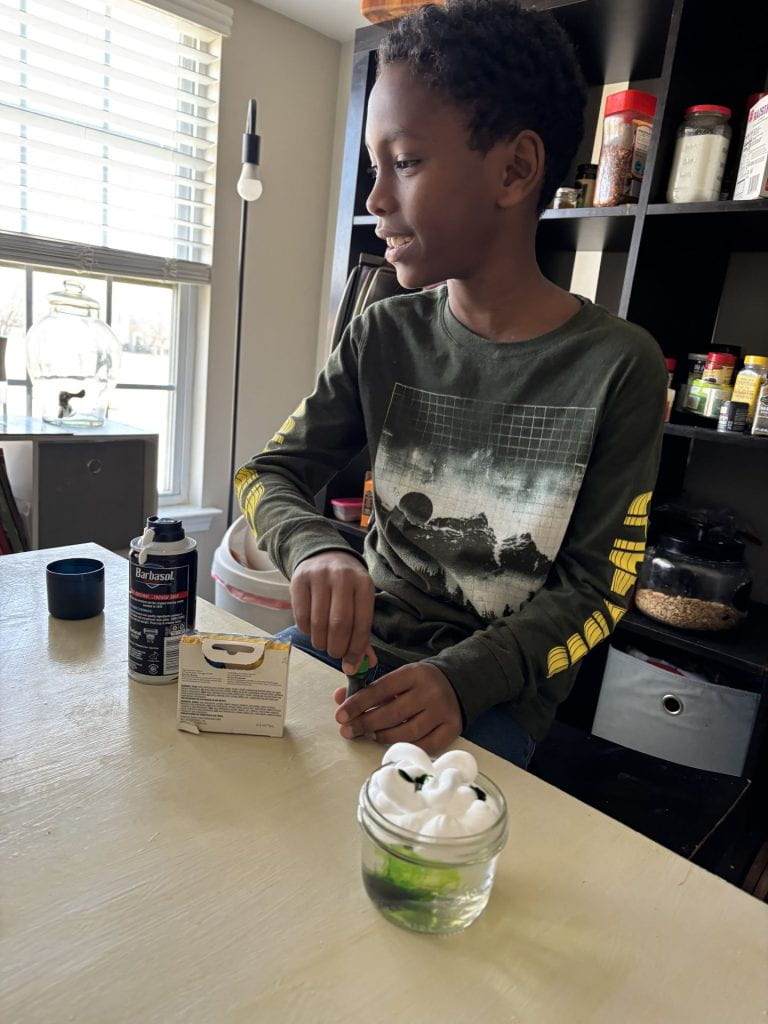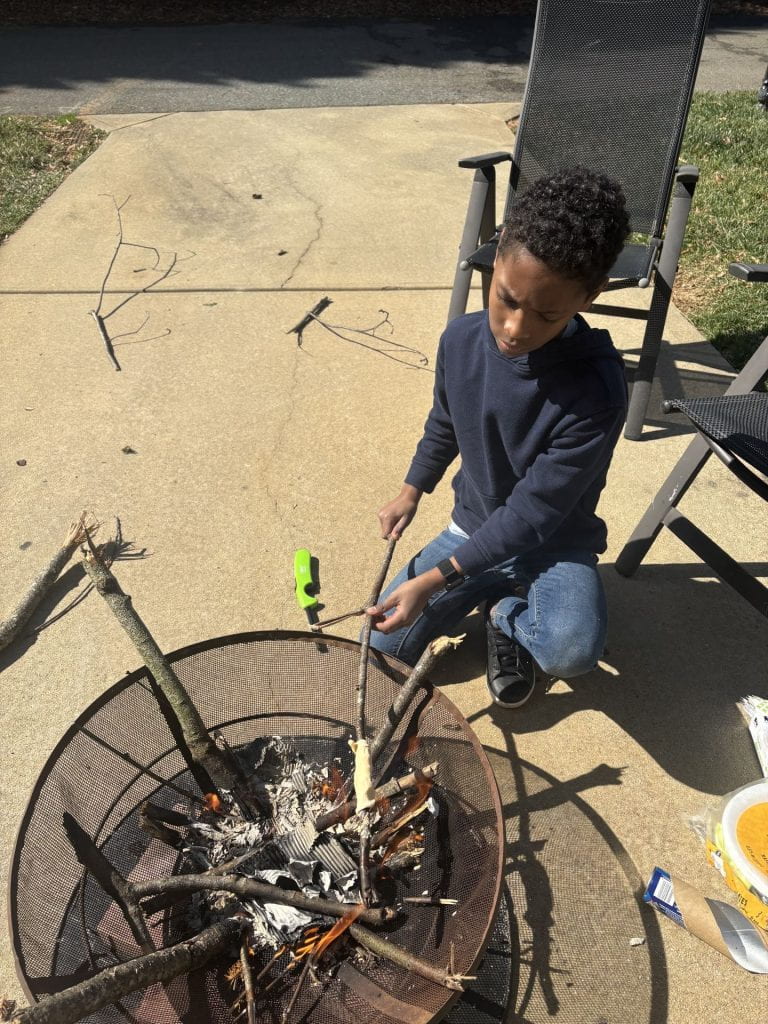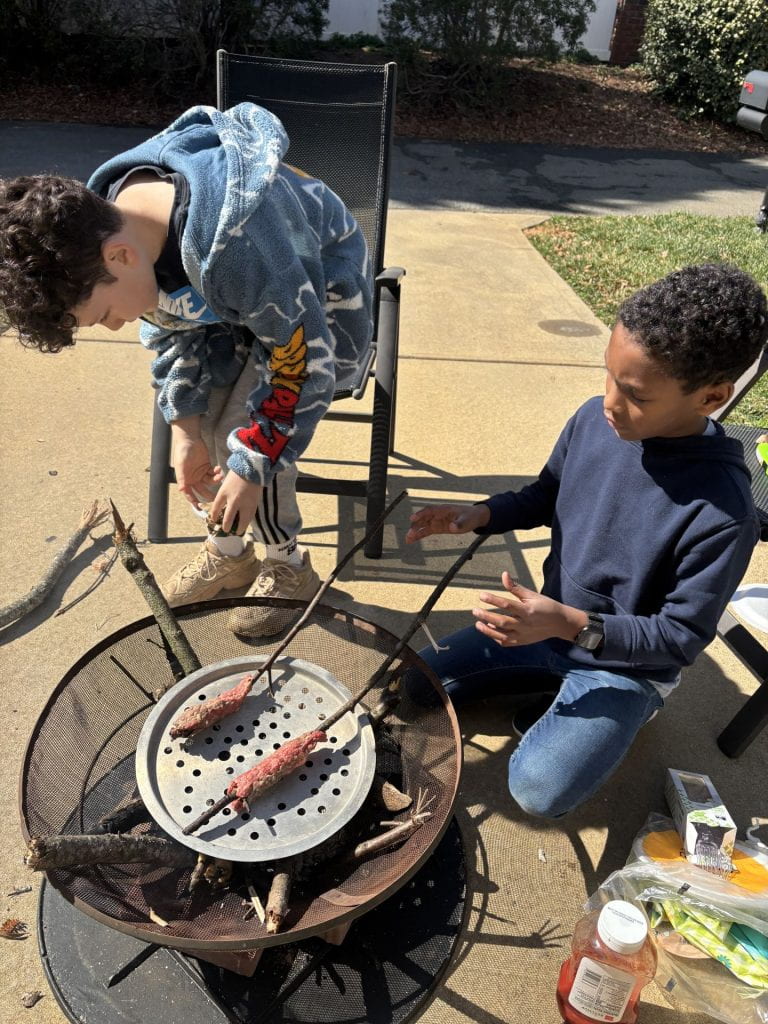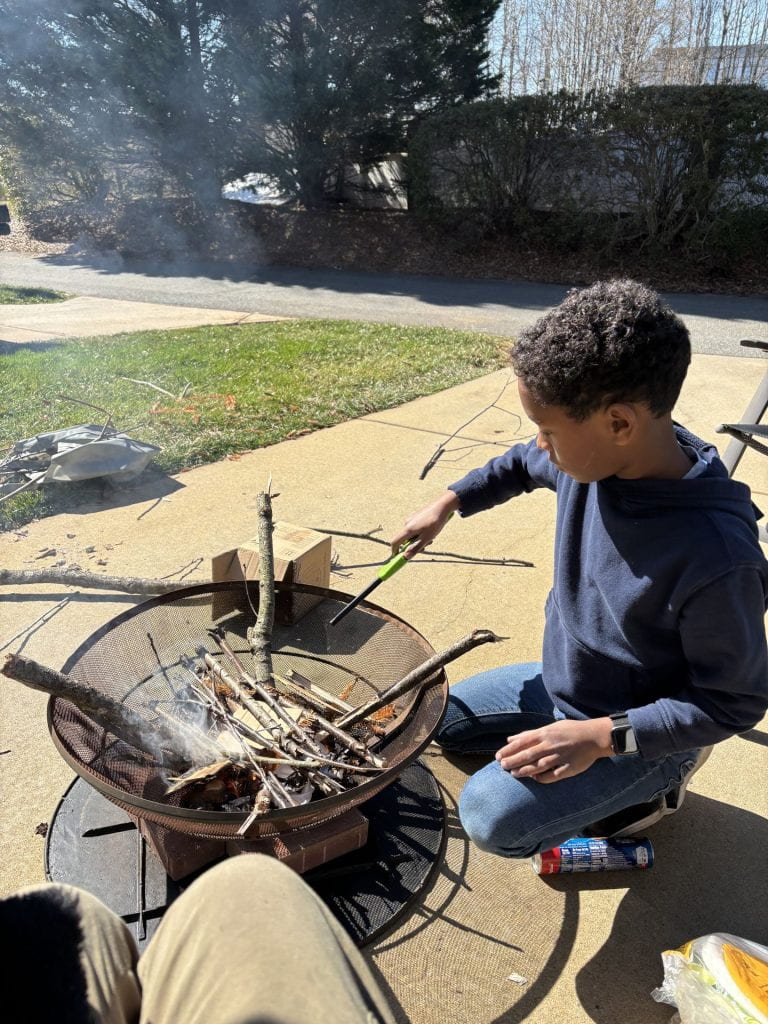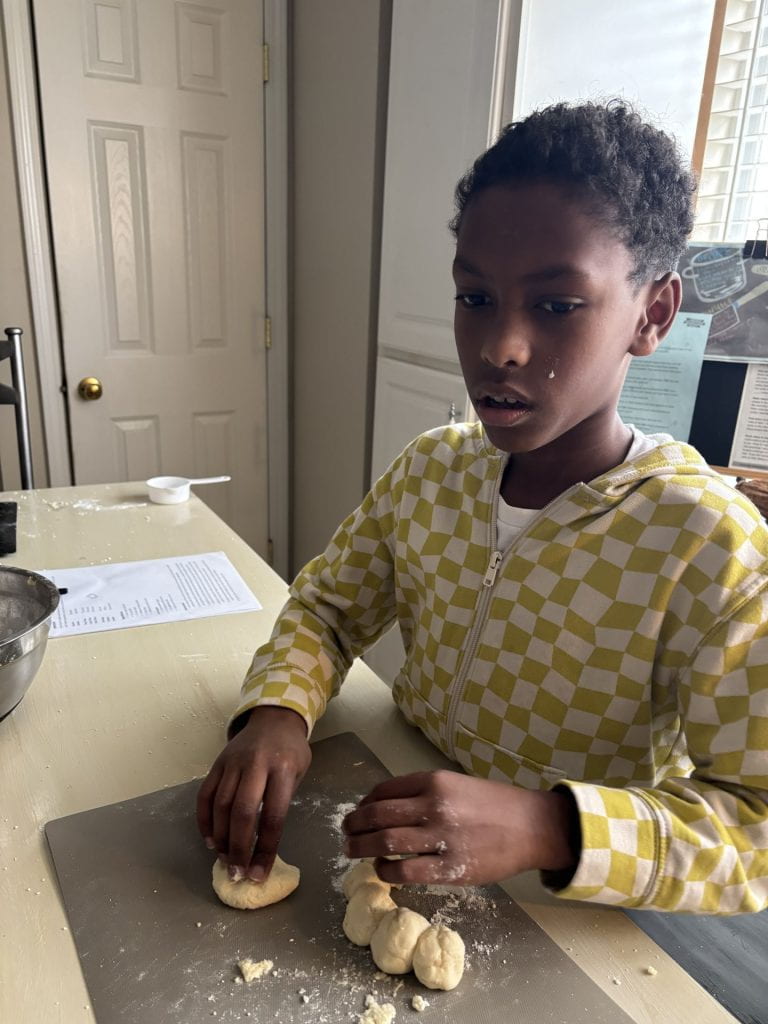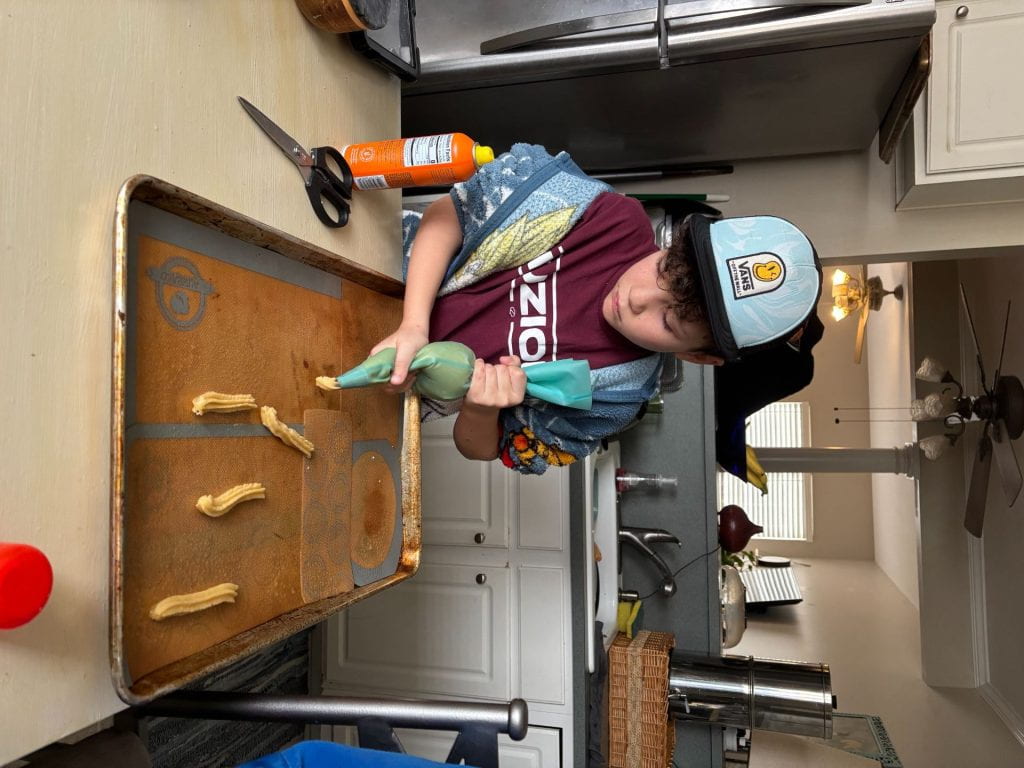News & Reminders
- There is a section at the bottom of this post about Standardized Testing. Please let me know once you read through it whether you’d like to have me use the MAP Test during our regular school day as the standardized test or if you prefer to take your child to a NC Testing Center for a test on your own. I will plan to do the MAP tests mid to late May.
- We will take a field trip this week. I will share more once the kids and I have a chance to talk more on Monday 🙂
Highlights From Our Week…
- Earth Day was on Tuesday and so we talked about the history of Earth Day and the theme for this year, Our Power Our Planet. We talked about the Paris Climate Agreement and read an article to share President Trump’s decision to remove the US from the agreement. Following our reading, we fact checked President Trump’s statements and discussed our individual opinions on whether or not we agree with President Trump’s thinking. Charlotte fact checked Trump’s statement that “China was allowed to act with immunity while the US was held to unreasonable standards”. She found that China is actually doing a wide variety of things to support a reduction in carbon output and aims to peak carbon emissions before 2030 and be carbon neutral by 2060. Laurence and Sterling fact checked to find out that Trump’s complaint that the US always has a bigger role and that other countries don’t do their share isn’t true. We talked about how the Paris Climate Agreement lets each country set their own goals and that it is reasonable for countries like the US, who use a far greater share of resources, and output more carbon, would have a bigger job to do to reduce emissions. Ollie shared that he feels angry when he reads about Trump’s decisions and I described that our anger can be useful towards feeling the motivation to make change. When we feel angry, we can recognize it and choose our response.
- We investigated the pond this week to develop a prediction on whether the pond was a healthy ecosystem or not. First, we researched together to find out what to look for to help us decide about the health of the pond. We read this article, Healthy pond and wetland ecosystems and they each took two sections to read, write and share about so we all had the needed information. Charlotte wasn’t here on this day, so she caught up and did all the reading and writing on Thursday. On Thursday, we went out to the pond to look for signs of trash, diversity of plant life, amounts of algae, trophic levels and the amount/health of the soil. Together we took turns taking the lead on sharing the information we found and typing it into our shared document and then we each made our individual predictions on the health of the pond and explained our thinking. At the end of the day, we began our series of water tests to confirm whether or not the pond environment represented a healthy ecosystem. We tested the dissolved oxygen levels in the puddle makeshift pond and the actual pond and found the ppm to be 46/48 which means the oxygen levels in the pond are poor. We will continue our water testing next week. Here is the report we’ve been working on so far for everyone to see.
- As always, working alongside kids never ceases to amaze me. I just finished writing a short-form book to share the philosophy behind Bridges Academy more broadly and so I’ve been including some of the content in conversation with the kids. This week we kind of naturally fell into a conversation about the purpose for education when Ollie asked me if he could spend some time looking up to see if a real pilot’s routine to start a flight really reflected what he was experiencing in his flight simulation. This gave me a chance to talk with them about the “why” behind going to school. I explained that there are really three purposes for school. One is to help kids find and develop their passions and gifts so they can contribute these through the world of work, the second is to guide them in learning about how the world works so they can form values and make choices that help to support our growing/changing world and the third is to learn to work collaboratively alongside others so we can create together and solve problems that our inter-connected world faces. I explained that we are all more motivated and curious to explore some things more than others and often, these things become our passions. Knowing what we are deeply care about, to the point that we choose to do it when no one tells us we have to and paying attention to what our strengths are can help us to figure out who we are and how we want to shape our life, including in the world of work. I described that this is why we have time included in our day for their personal projects and why I always list learning in our checklists and home learning as directed or self-directed. I shared that it is important for Ollie to explore flight simulation, moments in history and politics, Laurence his love for piano, skateboarding and animation, Sterling’s passion for sewing, painting and her gift for organizing, planning and shopping for ideas and items, Charlotte’s gifts for creating artwork, sewing, and her love for animals. We each have our own unique strengths and gifts and when we know what they are and feel comfortable sharing them, we begin to feel a strong sense for who we are and can lead and create together with others. I highlighted to Sterling that the way she organized, researched and shopped for the chicks for our ecosystem exploration showed amazing skills, commitment and time. I shared that this skill she has is a gift and it is a job in the world of work called procurement to buy things that businesses and companies need. I could feel the “ah ha” moment in the kids as they started to think about their individual gifts and strengths. Charlotte wasn’t with us on this day, but it led to Sterling showing us how flexible she is when she put her leg behind her head and the boys were incredibly impressed. She showed them how she was practicing to do a handstand and Ollie showed her a trick he uses to climb up a wall into a handstand. I shared the tri-pod I form to do a headstand and Laurence wanted to try it. We just kind of naturally fell into being collaborative and willing to show and share our strengths with one another to help each other. I also had a chance to explain why we also spend time learning non-preferred things …..we often need to learn and do non-preferred things as stepping stones towards a bigger goal and it is important for all of us to understand how the world works in many different ways so that we can be intelligent enough to be critical thinkers who can evaluate information and make decisions that impact our world.
- Ollie and Laurence are both working on metric measurement this week for math, so they decided to work together. Ollie hesitated, as in the past, when they tried to listen/read “Hunger Games” together, it didn’t wind up working out well. They decided to give it a go and I wound up sitting in the kitchen to watch the process. I explained that being able to work together with others is an important goal too and learning strategies for how to be able to focus, support and “bounce ideas/strategies off” one another take time to figure out. Sterling is working on long multiplication problems and recognizing how one little misstep can cause the whole problem to come out wrong. We talked about how having the patience and slowing down to do each little step can help with accuracy and that although she would likely use a calculator to do these kinds of problems in a work environment, it is important to know how the math works and that developing patience, slowing down for accuracy and sticking with something hard are always useful skills that apply in lots of areas of our lives. Charlotte is working on geometry and flipping shapes on a graph. This is a very challenging skill and again, like Sterling, she may not often use this skill in her chosen line of work at some point, but having the stamina to figure out and work through a tough problem and have the resilience to get through frustration to learning new things is always valuable.
- All the kids are reading their chosen books. Laurence is reading “The One and Only Ivan”, Ollie is reading “Maze Runner”, Sterling is reading a historical novel about Abraham Lincoln, “Chasing Lincoln’s Killer” and Charlotte is in the process of choosing a new book after finishing her novel “If Cats Disappeared from the World”. We usually choose the order of our learning based on our shared checklist, but on Wednesday, we trialed setting aside a shared time where we were all reading at the same time, me included. I thought this really worked well as everyone had the needed quiet time to deeply engage in reading. Reading is not everyone’s preferred choice and so it was an exciting moment on the drive home this week, when Laurence and Ollie made a connection between a song they were listening to and a character in the “Hunger Games”. I was thrilled to hear them book talking and making connections on their own beyond the contents of the book to their own lives. This is exactly what reading is about 🙂
Standardized Testing
All homeschools are responsible for giving a standardized test to students each year. The timing and what test is taken are up to families as long as the test is a standardized one. We do not have to send test results to the state, they just remain in the learning records that I keep for each of the kids. You are welcome to take your child to a state testing site for testing. Since we are not required to use the NC State EOG test, I will also offer the opportunity for the kids to take a standardized MAP test during our regular learning day. This test is often used by home school families as it isn’t timed and it gives a more natural, relaxed feeling of being one measure among many. I like this test as it isn’t confined to grade level. Just like IXL, the questions asked are signaled by each individual child’s response. Here is some more information about the MAP Test.
“MAP Growth tests are used by over nine million students in the United States and utilized by over 140 countries worldwide. “The NWEA MAP test is designed to adjust to each student’s responses, making the test easier or more difficult depending on how accurate the student’s responses are. MAP Growth tests are adaptive, cross-grade, and achievement-focused. An adaptive test means that your student will experience a test that flexes with them as they answer each question. Each test level provides challenging questions with the potential to go above grade-level to adequately measure your student’s current knowledge level. Nationally-normed and standardized – A norming study takes places every few years to ensure that MAP Growth assessments are using precise measurements that are congruent with current education standards to measure your students achievement. What this means is your student is being compared with students from all over the United States who participated in the most recent norming study. The most recent study was published in early 2020.”
Photos …
From This Week…
